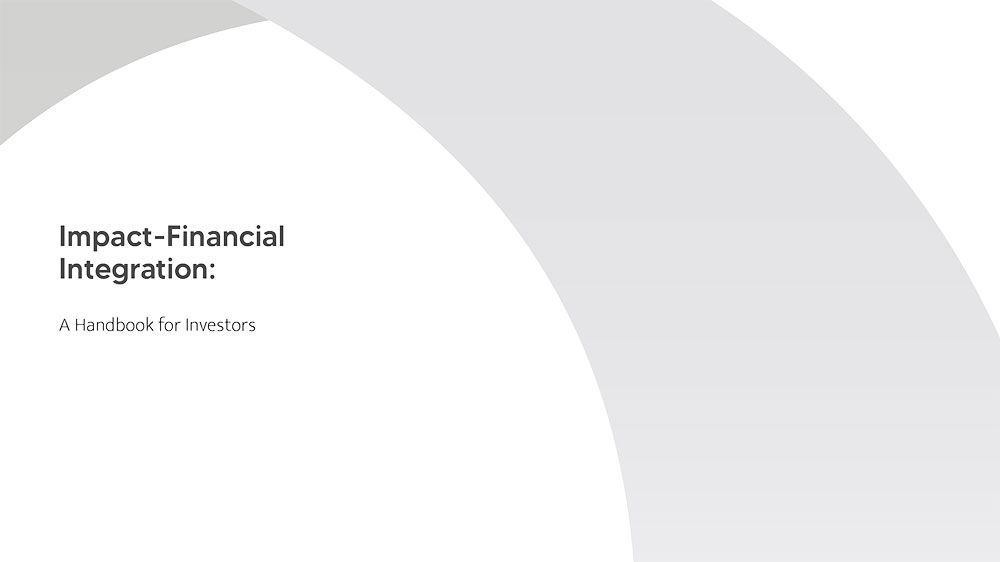Table of Contents
Impact data: where to find metrics and tools
IRIS Impact Metrics Database
IRIS+ is the generally accepted system for measuring, managing, and optimizing impact. IRIS+ makes it easier for investors to translate their impact intentions into impact results. All investors and companies create both positive and negative effects on society and the environment. Impact investors seek to maximize the positive and minimize the negative by using the IRIS+ system to integrate social and environmental factors into investment decisions alongside risk and return.
IRIS indicators are organized in the following broad categories:
- Organization Description – metrics that focus on the organization’s mission, operational model, and location.
- Product Description – metrics that describe the organization’s products and services and target markets.
- Financial Performance – commonly reported financial metrics.
- Operational Impact – metrics that describe the organization’s policies, employees, and environmental performance.
- Product Impact – metrics that describe the performance and reach of the organization’s products and services.
- You can also search for metrics according to specific Sustainable Development Goals.
Benchmarking Data
Societal Data
The General Social Survey (GSS). This survey has been used for more than 40 years and is used (usually by politicians or policymakers) to acquire a picture of the opinions of the U.S. populace on various national issues.
Household Community Data
The Living Standards Measurement Study (LSMS) by the World Bank has a general objective to the improvement of evidence-based policymaking. The Study facilitates acquisition of quality data through best practices in survey implementation. Country-specific studies are listed in alphabetical order and the database includes several years of studies.
OECD Regional Database
The OECD Regional Database provides a unique set of comparable statistics and indicators on about 2 000 regions in 36 OECD countries, plus China, Colombia, India, Peru, the Russian Federation, South Africa and Tunisia. It currently encompasses yearly time series for around 40 indicators of demography, economic accounts, labour market, social and innovation themes in the OECD member countries and other economies.
OECD Metropolitan Database
The OECD Metropolitan Database provides a set of economic, environmental, social, labour market and demographic estimated indicatos on the 649 OECD metropolitan areas (functional urban areas with 250 000 or more inhabitants).
Impact-Financial Integration
The Impact Frontiers initiative by the Impact Management Project is a collaborative learning program supporting investors to pioneer new ways to integrate impact alongside financial risk and return in investment practices.
Impact Frontiers launched two publications in 2020:
- This investor handbook on impact-financial integration, which outlines the impact-financial integration methods that were developed and implemented with a collaboration of 13 investors.
- This Stanford Social Innovation Review article, which explores Impact Frontiers’ work in depth.
In current investment practice, financial and impact performance are mostly assessed separately rather than in comparison to one another. This lack of integration leaves an impact and/or money on the table.
To address this opportunity, in 2018 Impact Frontiers launched a two-year learning cohort with twelve investors dedicated to advancing their impact management practices in a way that is fully integrated with financial risk and return – both conceptually and in their systems and processes. The lessons from this collaboration will be developed into practical guidance that has been made available as a public good in 2020.
After years of framework development, metric definition, and data collection, many investors are increasingly able to anticipate, measure, and manage the social and environmental results of their investments. But for investors to play an even greater role in solving social problems, impact management must leave its silo and integrate with financial management. The challenge is that financial and impact management methodologies are not designed to be interoperable. Impact specialists at investment funds typically have their own teams with their own vernacular, frameworks, and datasets, all of which exist in varying degrees of isolation from their financial counterparts. Siloed approaches leave impact, money, or both on the table. Yet investors who wish to integrate financial, social and environmental considerations are faced with a custom job. To address this challenge, organizations have participated for the past two years in the Impact Frontiers Collaboration, an initiative of the Impact Management Project (IMP), to pioneer new ways to integrate impact management with financial management. The benefit of greater impact-financial integration for the world at large transcends the benefits for individual investors. It has the potential to change the way financial markets allocate capital to address urgent problems. In an era marked by the coronavirus epidemic, climate change, and historic levels of inequality, building a financial sector that better serves society has never been more important – and more possible.
